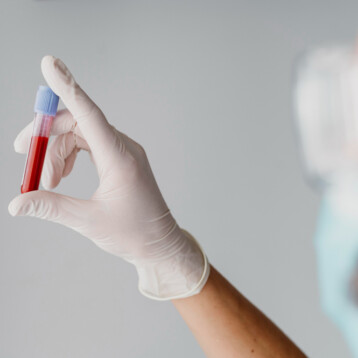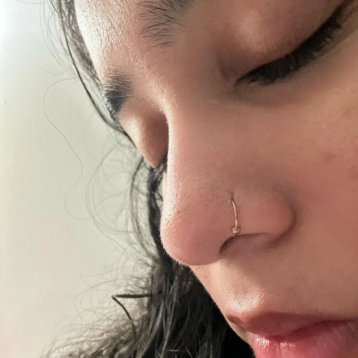|
Jointly developed by graduate student Geoffrey von Maltzahn and Professor Sangeeta Bhatia of the Harvard-MIT Division of Health Sciences and Technology and MIT Department of Electrical Engineering and Computer Science, the nanorods are less than 40 nanometers long. Because blood vessels near tumors have tiny pores just large enough for the nanorods to enter, the rods accumulate inside tumors. When beams from a near infrared laser hit them, the particles absorb the energy and convert it to heat, reaching up to 70 degrees Celsius. This heat is localized enough to destroy the tumor without harming healthy tissue nearby. The nanorods could also be used to make chemotherapy and other traditional cancer treatments more effective because they can still weaken tumor cells when heated to lower temperatures.
Because the rods congregate inside tumors, they can also be used to detect the presence of tumors in the body. Any nanorods that don’t reach a tumor congregate around the liver and spleen and then are ejected from the body through normal means. After injection, the gold particles can be imaged using Raman spectroscopy. If concentrations of particles are found anywhere other than the liver or spleen, it’s a good indication of a tumor in that location. The particles can also be coated with different types of light scattering molecules to provide additional information about any tumors and the tissue surrounding them.
All tests to date have been performed on mice and have proven to be very successful. Tumors in mice disappeared within 15 days and did not reoccur during the three month test period after a single application of gold nanorods triggered by an infrared laser. Conversely, mice receiving no treatment, just the nanorods, or just the laser application, did not survive over the same period of time. Before the gold nanorods can be used on humans, the new technology must undergo clinical trials and the extensive FDA approval process.
TFOT has previously reported on other medical applications of nanotechnology including “smart bombs” that can deliver a virus to attack cancer cells, an engineered nanostructure to deliver inhaled insulin, and the development of nanobots that can travel against the blood flow in human arteries and veins. TFOT has also reported on other medical applications of spectroscopy including a new way to use Raman spectroscopy to detect early tooth decay and a blood glucose monitor based on occlusion spectroscopy.
Read more about the gold nanorods and their applications in treating and diagnosing tumors in this MIT press release.
Image icon author: Idistrust











